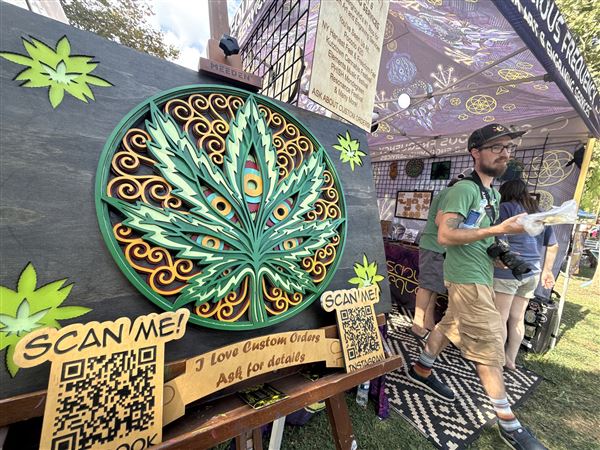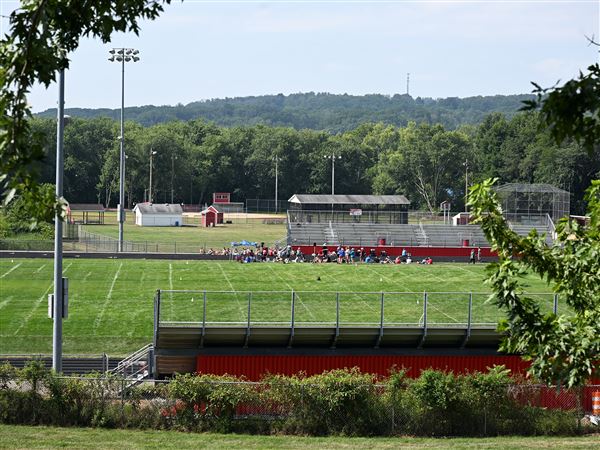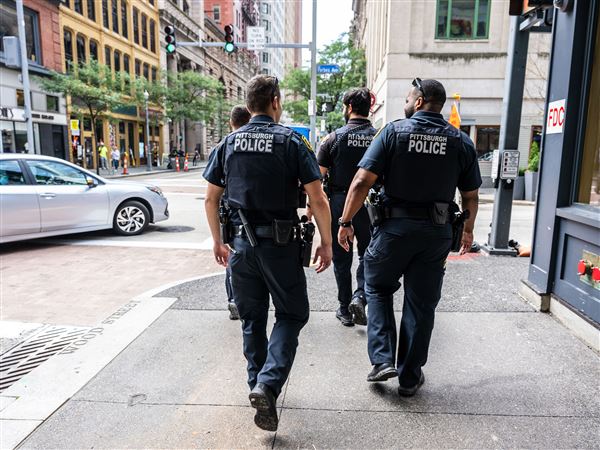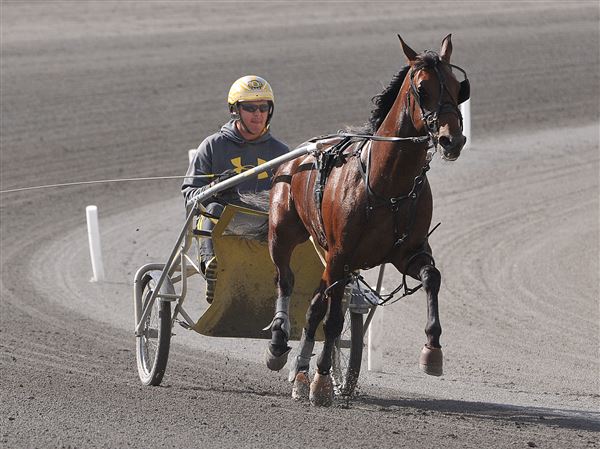ERIE — The idea of a non-motorized, multipurpose trail connecting the Perry Monument on Presque Isle State Park in Erie to The Point in Pittsburgh first surfaced decades ago.
Although the highway distance between the two cities is 128 miles, the Erie to Pittsburgh Trail — or EPT — when completed years from now, is projected to be 270 miles.
Yes, the trail meanders quite a bit, but that’s just part of its considerable charm. It includes segments that extend into wine country in western New York, wrap around the northern end of Lake Chautauqua and re-enter Pennsylvania where it continues into, through or by a number of small towns.
It is two-thirds complete. Some segments of the trail are paved, others have a compacted crushed limestone surface and a few, notably the 27-mile Chautauqua segment, are dirt and due for an upgrade. The Amish and their horse-drawn buggies share the trail in some segments.
Now that the 150-mile Great Allegheny Passage is finished from Pittsburgh to Cumberland, Md. (connecting to the 184.5-mile C&O Canal Towpath to Washington, D.C.), attention is shifting northward to a whole new array of cycling possibilities.
The EPT rambles south from western New York to Oil Creek, tracks the aptly named and odiferous creek to the Allegheny River and follows the Allegheny to The Point.
A lot needs to be done. In addition to the need for improved signage, there are sizeable and difficult gaps in the EPT that will take time, money, patience and a lot of work to complete, said Ron Steffey, president of the Erie to Pittsburgh Trail Alliance, a can-do coalition of trail groups, municipalities and individuals.
The cooperation, teamwork and accomplishments among the various alliance members to acquire sections, build and/or maintain the EPT is reminiscent of the slogan attributed to various units of the Armed Forces during World War II, especially the Naval Construction Battalions (Seabees).
“The difficult we do immediately; the impossible takes a little longer.”
Trail development has often been challenging, but there is steady progress toward reducing or eliminating the remaining gaps, said Roy Weil and Mary Shaw, the husband and wife authors of “FreeWheeling Easy in Western Pennsylvania.”
The Squirrel Hill couple, lifelong bicyclists, are updating their book, which includes the EPT. They plan to publish the EPT section as a separate guide.
The Trail Volunteer Fund of The Pittsburgh Foundation, which the couple established several years ago, has helped to buy materials for volunteers working on the trail.
“Roy and I see the Erie to Pittsburgh Trail as the next great opportunity (since the completion of the Great Allegheny Passage) for a long-distance trail connecting major cities and bringing economic development to the towns along the route,” Ms. Shaw said.
In 2013, the Rails-to-Trails Conservancy, based in Washington, D.C., conducted a survey to monitor trail-user characteristics and the economic impact of five trail segments totaling 54 miles of the EPT — Queen City, Oil Creek State Park, McClintock, Samuel Justus and Allegheny River — and the 12-mile Sandy Creek Trail that crosses the EPT on the Belmar Bridge.
Kim Harris, project manager for the Oil Region Alliance of Business, Industry and Tourism, said the survey showed that 158,507 trail users in 2013 pumped $6.9 million directly into the local economy.
Almost 90 percent of the visitors came from 25 counties in Pennsylvania, most were between 56 to 65 years of age and an overwhelming majority — 51.8 percent — were bicyclists. Walkers — 27.8 percent — made up the next largest group.
The survey said almost 55 percent used the trail for health reasons; 42.8 percent used it for recreation.
Venango County will welcome bicyclists this spring with three stand-alone Dero DIY Bicycle Fixit Stations with multiple tools and an air pump. They will be located in Fleming Park in Titusville, the Jersey Bridge parking lot at the Drake Well Museum and next to the park office in Oil Creek State Park.
Small towns like Spartansburg in Crawford County take considerable pride in their trail segments. The town is centrally located along the 3.1-mile paved East Branch segment that is used by bicyclists, birders, walkers, runners, turtle hunters and Amish buggies.
Turtle hunters?
“One turtle weighed 32 pounds,” said Chris Jewel, a cashier at the popular Dutch Treat restaurant that borders the trail in Spartansburg.
“When the weather cooperates, the trail is just packed on weekends and after school on weekdays,” Mrs. Jewel said. “We hope the trail will grow and grow and grow.”
On the way from Titusville to Emlenton, the 1.7 mile segment of the McClintock Trail near Oil City “is a rail with a trail,“ said Debra Frawley, Greenways coordinator for the Oil Region Alliance in Oil City. A chain-link fence separates the trail from the active Western New York & Pennsylvania Railroad.
Farther on, the EPT goes through the non-illuminated Kennerdell and Rockford Tunnels.
There’s a 3-mile gap in the EPT between Emlenton and Foxburg and an almost 8-mile gap between Parker Landing and Upper Hillvale where it joins the Armstrong Trail. The latter extends 30 uninterrupted miles from East Brady to Rosston. The Redbank Valley Trail joins the Armstrong Trail 5.5 miles downstream from Bradys Bend and extends 42 miles up to Brookville in Jefferson County.
After another gap, the EPT crosses the Freeport Bridge where bicyclists can connect with the Butler-Freeport Community Trail. Or they can continue, with still more gaps, toward Pittsburgh.
Although the ultimate goal is to have a bike trail on both sides of the Allegheny River upstream from The Point, it won’t be easy.
Jeffrey McCauley, stewardship coordinator for Friends of the Riverfront, said the organization is working with municipalities on both sides of the river to establish share-the-road or lanes that separate bikes and pedestrians.
He said Friends of the Riverfront worked with Tarentum to establish on-street routes for bikes and sidewalks for pedestrians.
The trail travels through the borough’s riverfront park and continues through the business district “so users can enjoy the uniqueness of the Tarentum community,” Mr. McCauley said.
Ride on.
Information: www.eriepittsburghtrail.org.
Lawrence Walsh writes about recreational bicycling for the Post-Gazette.
First Published: April 4, 2015, 4:00 a.m.






















